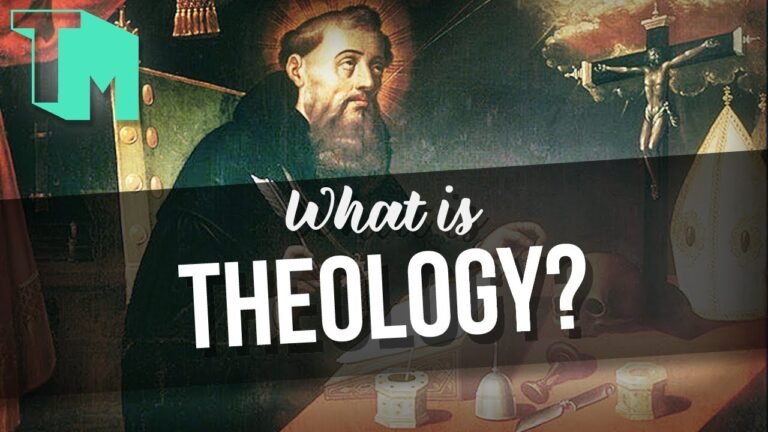Understanding Edom: History and Significance
Edom, a historical region located southeast of ancient Israel, holds a significant place in biblical narratives and archaeological studies. Rich in culture and resources, Edom was home to a vibrant society that thrived on trade and agriculture, yet it also faced enduring conflicts with neighboring nations. This article explores the fascinating history of Edom, delving into its economic foundations, cultural heritage, and the enduring legacy of its people in the context of ancient Near Eastern history. Join us as we uncover the intriguing stories that shaped this remarkable region.
What is the biblical meaning of Edom?
In biblical terms, Edom is closely associated with the color red, deriving its meaning from the Hebrew word for “red.” This connection is rooted in the narrative of Esau, the founding figure of the Edomites. He was noted for his reddish appearance at birth, which not only influenced his name but also shaped the identity of the nation that descended from him.
The story of Esau highlights a significant moment in biblical history when he traded his birthright to his younger brother Jacob for a bowl of red pottage. This act symbolizes not only a moment of personal choice but also foreshadows the ongoing tension between the two brothers and their descendants. The Edomites, as Esau’s lineage, would later represent a distinct nation with its own struggles and interactions with Israel.
Edom’s legacy extends beyond its origins, serving as a symbol of conflict and rivalry within biblical texts. The relationship between the Edomites and the Israelites was marked by both kinship and enmity, illustrating themes of familial bonds and the complexities of heritage. Understanding Edom’s biblical significance provides deeper insight into the historical and spiritual narratives that shape the ancient world.
What caused God’s anger towards Edom?
God’s anger towards Edom stems from a profound betrayal of familial bonds. The relationship between Edom and Jacob symbolizes a deeper connection, representing not just two nations but an inherent brotherhood. When Edom chose to act violently against Jacob, it shattered the trust and unity that should have defined their kinship. This act of aggression did not merely breach a political or social contract; it violated the sacred duty of compassion and support between brothers.
The gravity of Edom’s transgression cannot be overstated. The violence inflicted upon Jacob was not a momentary lapse but a deliberate choice that revealed a heart steeped in enmity. This choice led to a severing of ties, resulting in God’s declaration that shame would envelop Edom, and they would face eternal consequences. The depth of their betrayal warranted an equally profound response, illustrating how seriously God views the bonds of brotherhood and the responsibilities that accompany them.
Ultimately, Edom’s actions serve as a cautionary tale about the consequences of forsaking moral obligations toward one another. By prioritizing hostility over kinship, Edom not only invited divine wrath but also set a precedent for how betrayal can lead to irreversible downfall. God’s judgment reflects a divine commitment to justice, emphasizing that the bonds of brotherhood should never be taken lightly, as they hold the potential to define the course of nations and their legacies.
Was Edom considered an adversary of Israel?
Edom is frequently depicted in biblical texts as a fierce adversary of Israel, embodying the ultimate opposition to Yahweh and His chosen people. This enmity is underscored by Edom’s involvement in the destruction of Jerusalem, where its people not only looted the city but also betrayed its inhabitants by facilitating their deportation. Such actions highlight the depth of hostility between Edom and Israel.
The alliance between Edom and Babylon during the conquest of Jerusalem further cements Edom’s role as an active participant in the city’s downfall. By collaborating with the Babylonians, Edom demonstrated a willingness to exploit Israel’s vulnerabilities, contributing to the razing of the temple and the suffering of the Jewish people. This historical antagonism has left a lasting mark on the narrative of Israel’s struggles and the broader theme of fidelity versus betrayal in biblical history.
Unraveling the Legacy of an Ancient Kingdom
The ancient kingdom of Axum, nestled in the horn of Africa, stands as a testament to a civilization that flourished over two millennia ago. Renowned for its monumental obelisks and advanced architecture, Axum was not only a political powerhouse but also a significant trade hub that connected Africa, the Middle East, and beyond. The kingdom’s wealth and influence were derived from its strategic position along trade routes, enabling it to export valuable commodities like gold, ivory, and frankincense while importing luxury goods from distant lands.
Central to Axum’s legacy is its remarkable embrace of Christianity, which transformed the region in the 4th century when it became one of the first nations to adopt the faith as its state religion. This pivotal moment not only reshaped the cultural landscape but also established Axum as a beacon of religious scholarship and artistry, evident in its stunning churches and intricate religious artifacts. The blend of indigenous traditions and Christian beliefs created a unique cultural tapestry that enriched the kingdom’s identity and left a lasting imprint on subsequent generations.
Today, the remnants of Axum’s greatness are a source of fascination for historians and archaeologists alike. The kingdom’s ruins, including the famed stelae and the Church of St. Mary of Zion, invite exploration and reflection, offering glimpses into a vibrant past that shaped the region’s history. As scholars continue to uncover the layers of Axum’s story, they illuminate the resilience and ingenuity of a civilization that thrived against the odds, reminding us of the interconnectedness of ancient cultures and the enduring impact of their legacies on our modern world.
Exploring Edom’s Cultural and Historical Impact
Edom, a kingdom steeped in rich history and vibrant culture, played a pivotal role in the ancient Near East, influencing trade, politics, and cultural exchange. Nestled between the Dead Sea and the Red Sea, Edomites were known for their mastery of mining and metallurgy, which facilitated prosperous trade routes that connected diverse civilizations. This strategic location not only fostered economic growth but also made Edom a cultural melting pot where traditions, languages, and artistic expressions intertwined. The archaeological remnants of Edomite cities and their intricate pottery, as well as biblical references, highlight their significant contributions to the region’s heritage, underscoring Edom’s lasting impact on the historical narrative of the Middle East.
From Origins to Influence: A Journey Through Edom
Edom, an ancient kingdom nestled between the Dead Sea and the Red Sea, boasts a rich tapestry of history that dates back to biblical times. Known for its rugged terrain and strategic trade routes, Edom was a significant player in the regional economy, connecting various cultures and civilizations. The Edomites, descendants of Esau, are mentioned throughout biblical narratives, highlighting their complex relationships with neighboring tribes and their resilience in the face of adversity. This historical backdrop laid the foundation for Edom’s cultural and economic influence that would resonate through the ages.
Over centuries, Edom’s legacy has transcended its geographical boundaries, shaping the cultural and political landscapes of surrounding regions. The kingdom’s interactions with Israel, as well as its eventual conquest by various empires, illustrate the ebb and flow of power in the ancient world. Today, the archaeological remains of Edom—ranging from impressive fortresses to intricate trade networks—serve as a testament to its vibrant past. As scholars continue to unravel the mysteries of Edom, its story offers valuable insights into the complexities of ancient societies and their enduring impact on contemporary life.
The Role of Edom in Shaping Regional Dynamics
Edom, a historical kingdom situated in the southern part of ancient Jordan, played a pivotal role in shaping the dynamics of the surrounding regions. Its strategic location along key trade routes allowed Edom to serve as a commercial hub, facilitating the exchange of goods and cultural ideas between Africa, Arabia, and the Levant. This positioning not only enriched Edom economically but also made it a vital player in the political landscape of the ancient Near East, often influencing alliances and rivalries among neighboring nations.
The Edomites, known for their resourceful adaptation to the arid environment, developed advanced agricultural techniques and engaged in mining activities, particularly in copper. These economic strengths provided Edom with the means to assert its power and engage in conflicts with neighboring kingdoms, including Israel and Moab. Over time, Edom’s interactions with these entities contributed to a complex tapestry of cultural exchanges and hostilities that shaped the identity of the region, leaving a lasting legacy that would influence future generations.
As empires rose and fell, Edom’s strategic importance continued to evolve, especially during the Hellenistic and Roman periods. The kingdom’s eventual decline was marked by shifts in trade routes and political power, yet its historical influence remained evident in the cultural and social frameworks of the region. Today, understanding Edom’s role offers valuable insights into the intricate relationships and historical developments that have shaped the Middle East, highlighting how ancient kingdoms can still resonate in modern geopolitical contexts.
Edom’s rich historical and cultural tapestry continues to captivate scholars and enthusiasts alike, shedding light on the complexities of ancient civilizations. As we delve deeper into the remnants of this once-thriving kingdom, we uncover not just the echoes of its past, but also the enduring legacy that shapes our understanding of the region today. Embracing the stories of Edom allows us to appreciate the intricate connections between history, culture, and identity, reminding us that the past is ever-present in our collective narrative.







